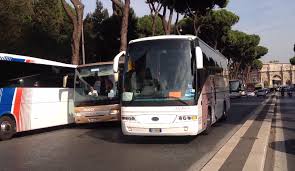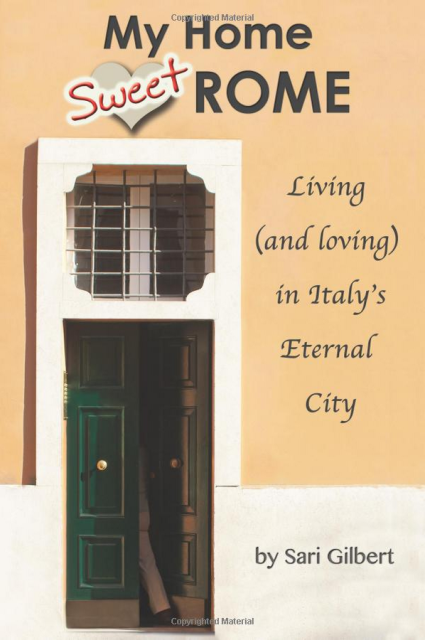As Giubileo looms, Rome trying to get ready
 With only three months to go before the onset of a special Roman Catholic Jubilee of Holy Year, the city of Rome appears (the appropriate word is “appears”) to be rushing to finalize plans to help deal with the traffic problems that inevitably will ensue from the expected arrival of an estimated 25 to 33 million visitors. Will they get these things done on time? Your guess is as good as mine but, as anyone who has lived here for a while knows, getting things done quickly in this city is almost a contradiction in terms.
With only three months to go before the onset of a special Roman Catholic Jubilee of Holy Year, the city of Rome appears (the appropriate word is “appears”) to be rushing to finalize plans to help deal with the traffic problems that inevitably will ensue from the expected arrival of an estimated 25 to 33 million visitors. Will they get these things done on time? Your guess is as good as mine but, as anyone who has lived here for a while knows, getting things done quickly in this city is almost a contradiction in terms.
The surprise announcement last April by Pope Francis I of the Jubilee of Mercy took the city by surprise since the last Jubilee – in Italian, il Giubileo − was only 15 years ago, in 2000. And so far little seems to have been done to prepare the Eternal City for the onslaught – an additional 50,000 peole every day, is one estimate − that will begin on December 8, which for Catholics who have been paying attention (many get it wrong) is the day commemorating the Immaculate Conception of Mary (not Jesus).
The emphasis, at the moment, appears to be that on limiting the entrance into the center of the city of the giant tour buses (the Italians call them torpedoni, large torpedos), that both normal tourists and Roman Catholic pilgrims often use to get here. The corollary is that of speeding up train and tram connections between Rome’s railroad and metro stations and Vatican City. Security measures are also to be reinforced.
Transport Commissioner, Stefano Esposito, is said to be planning on creating 300 new parking spots for tourist in ten new areas, even if it proves necessary to temporarily requisition the space. All of these would be outside the old Aurielian Walls that once enclosed ancient Rome and as close as possible to subway stations and railway terminals. He is also talking about a major increase in fines for tour buses coming into Rome without permits, from the current 500 euros to 1500 euros.
At present, a maximum of 1,744 buses can circulate within the Aurelian Walls every day, 1,300 of which with annual permits and the remaining 444 with pre-authorized daily permits. The big question is, and anyone who lives here will know what I mean, does anyone – that is, Rome’s city police – ever bother to check? I think it would be very easy to get away without paying, which may be why Esposito’s plan reportedly also calls for the first time for the use of traffic auxiliaries for checking out these giant buses, which by the way play a big part in making traffic here intolerable, especially as they frequently park in such a way that the number of traffic lanes is reduced.
He also plans to up the charges for the permits: annual permits from 2,800 euros to as much as 10,000. And daily permits are to be increased from 200 to 1000 euros.
The next part of the plan involves improving links between train stations and the Vatican. According to Jubilee coordinator, Maurizio Pucci, who is Rome’s public Works Commissioner, the Tiburtina train station (second in size to Termini) is to be a focal point of the improved network. Rome’s A and B subway lines are already overcrowded so the idea is to use the regional trains that go from Tiburtina to Ostiense and St.Peter’s to speed up connections. Right now many of these trains run every 15 minutes and the plan is to reduce that by half. A new parking lot for tourist buses is also to be constructed on the east side of the station terminal, so that visitors can get off their buses and on to trains that will take them across town.
Something will have to be done, however, about the little-used and poorly kept-up (though recently re-done) San Pietro (St. Peter’s) station, which is within (a longish) walking distance of the Vatican. At the moment, the ticket office is not functional, the elevators are broken (a disabled person has to ring for special assistance so he can be transported upstairs in a sort of freight elevator)
From the security point of view a few steps have already been planned. Some 5000 police currently on duty at the Milan Expo are to be transferred to Rome. There is to be a total ban on aircraft flying over the city. And hopefully something will be done to improve safety at the Termini railway station.
But there is an even more most daunting task, given recent events in Rome that will culminate in the start this November of the Mafia Capitale trial on corruption charges of some 50 businessmen and politicians accused. And that is to see that the 50 million euros that the Italian government has earmarked for use by the Rome city government in Jubilee-related public works will be spent honestly and not end up in the wrong people’s pockets.
Just in case anyone is interested, like many things in Roman Catholicism, the Jubilee dates back to a Jewish tradition that saw every 50 years set aside for the return of confiscated lands, the liberation of slaves and the lying fallow of agricultural lands. A ram’s horn, a yobel (hence Jubilee) would be sounded at the start of that year.
The tradition was carried on by the Roman Catholic church, starting in 1300 when Pope Boniface VIII decided that a Jubilee should be held once every century During the holy year, the pope would grant plenary indulgences to all pilgrims who travelled to Rome and completed certain religious rites. The year begins with the opening of a sealed door in St. Peter’s and sends with its re-sealing.
Starting in 1475, it was decided to hold a Jubilee every 25 years but subsequently Popes were given the possibility of calling a Holy Year to commemorate some great event. There have been 26 ordinary holy years since Boniface. In recent times, they were held in 1900, 1925, 1950 and 1975. Pope John Paul II called a special Jubilee of the Redemption in 1983. In 2000 there was a regularly scheduled holy year and now Pope Francis has followed in John Paul’s footsteps and called his own. All very lovely, but me, I’m thinking of getting out of town.


